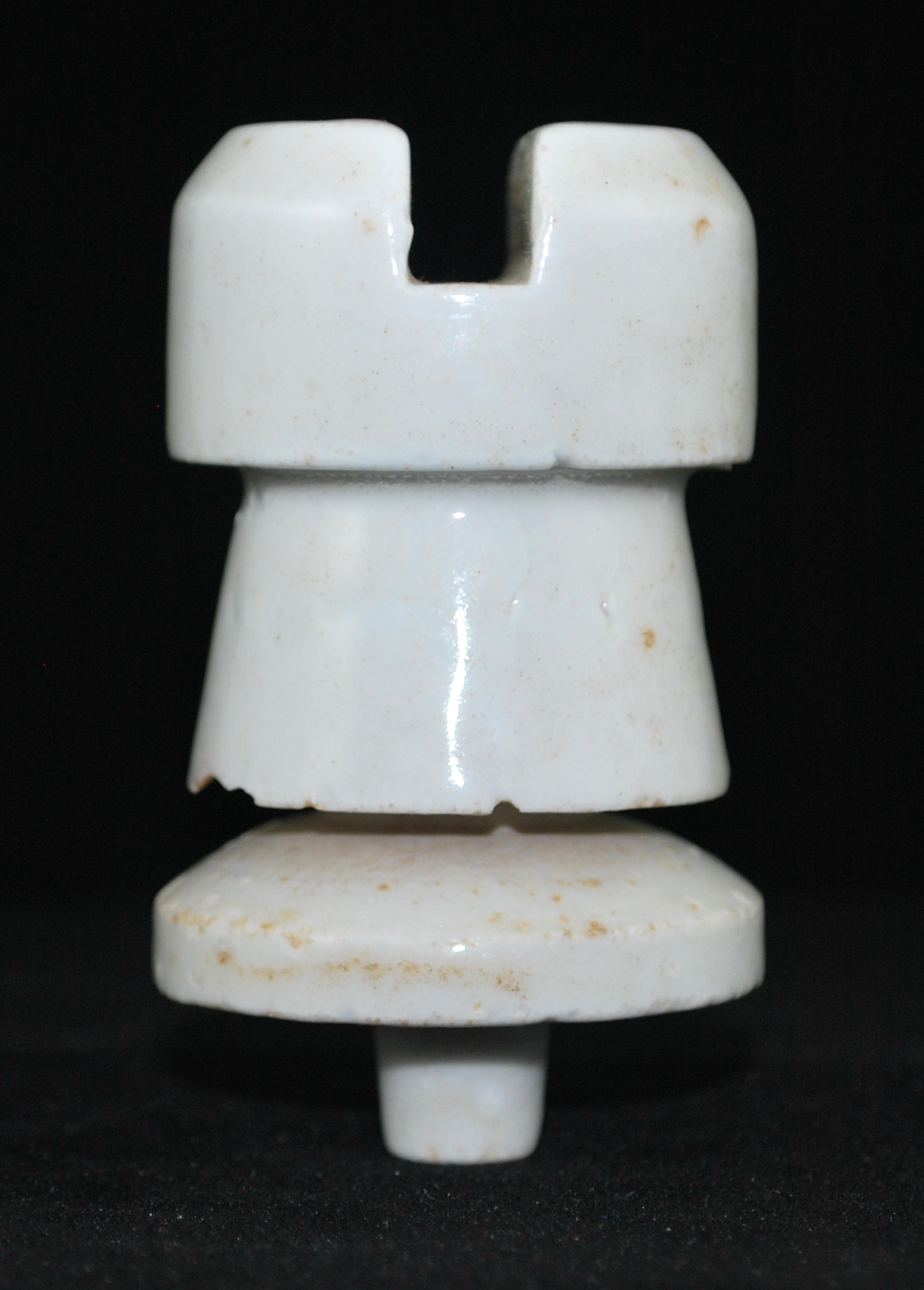
Gamewell Battery Support Insulator
This odd little 2-part porcelain insulator has popped up many times over the past 50 years and continues to raise curious questions. We have never addressed it before so it is time we lay out what little information we know about it.

Typical Gamewell insulator.
Little was known about these little two-part insulators. According to Gerald Brown's books, someone told him they held glass rods in the grooves to support batteries for Gamewell Fire Alarm Telegraph Co. systems in banks. Several years ago I did an exhaustive internet search on Gamewell and could not learn anything about the support for the batteries, but Steve Coffman was able to find a couple of references recently that confirmed how the insulators were used. One article described a Gamewell system installed in East Watertown, MA in 1906 for the Fire and Police Departments. The article in the April 14, 1917, issue of Electrical Review and Western Electrician gave this detailed account of the battery room in the Holyoke, MA Central Fire-Alarm Office:
The battery room at the rear of the central office contains three rows of five shelves, each of insulated metal battery racks with capacity for 500 storage cells of the couple type. These are connected on the A and B banks. The couples are mounted in glass jars on glass rods and porcelain insulators. Each set of batteries on each circuit is protected by three-ampere cartridge fuses. The batteries are connected to the storage-battery switchboard through wires concealed in the ducts, which enter floor boxes under each post. The wires enter the pipe posts from below and connect to the fuse blocks.
A private-branch-exchange telephone switchboard with 10 auxiliary lines to official and engine-house instruments is used for fire-department calls. It is also connected with the New England Telephone Company’s system by three trunk lines for public calls.
The complete system was installed by the Gamewell Fire Alarm Telegraph Company, of New York, under the direction of A. D. Wheeler, its New England agent. The installation work was done by E. P. Cochrane and G. A. Broder, construction engineers for Gamewell Company.
The batteries were used to maintain current in order to send a telegraph alarm message to the fire or police departments. There are grooves in the bottom of Gamewell glass battery jars to secure them on the glass rods supported by the little porcelain insulators. Apparently the plug-bottom of the insulators fit in holes in metal battery support racks. The Watertown article stated the storage batteries were “mounted on iron pipe racks with porcelain insulators and glass rods.”
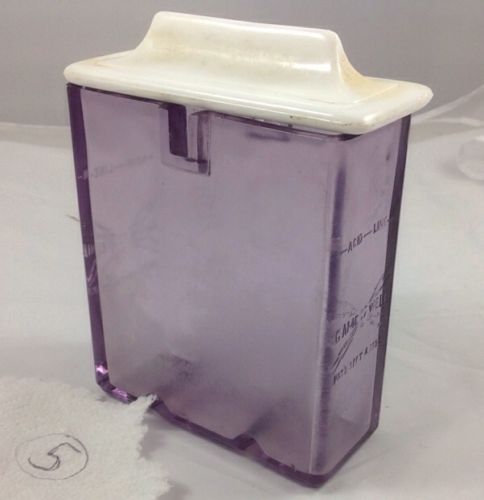
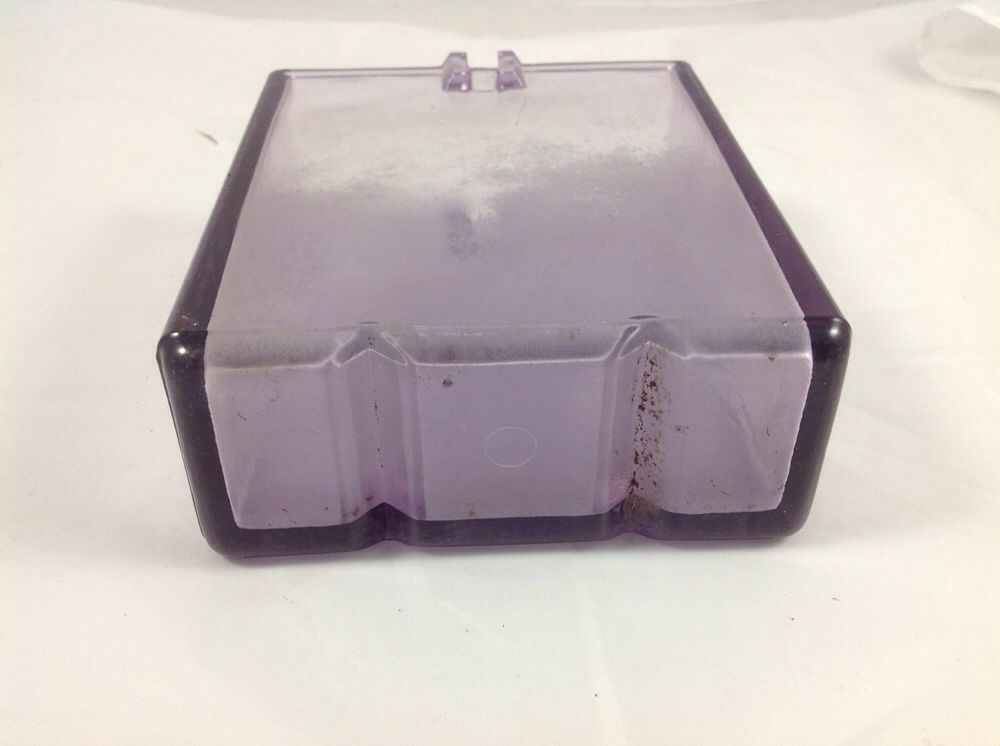
Gamewell glass battery jar with grooves in bottom.
Some of the insulators were originally found in a bank in Georgia or somewhere in the South. At least one insulator has been reported that was embossed on the bottom part: GAMEWELL 60. Here is a photo of the separate parts of the 2-part Gamewell insulator.
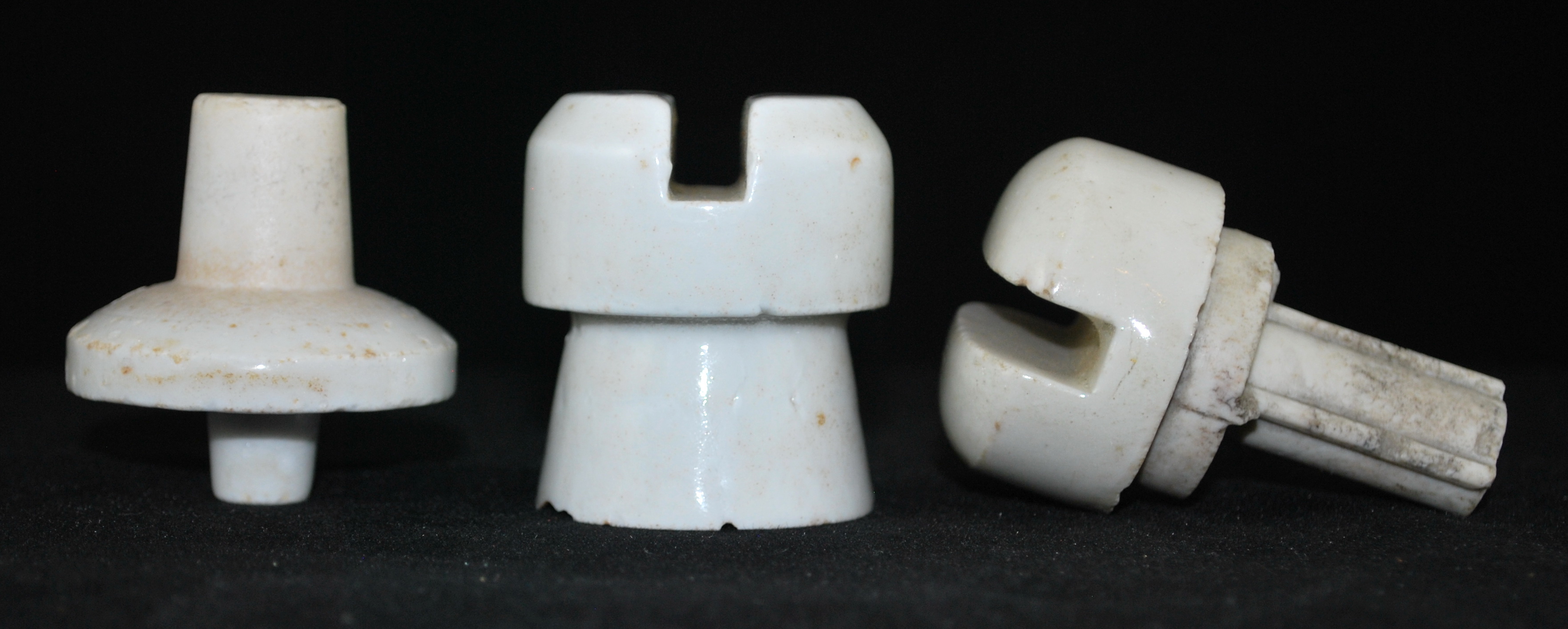
The head on the right is very different and requires a slotted type of base that I do not have. Perhaps it is an early version that fit in the iron pipe rack?
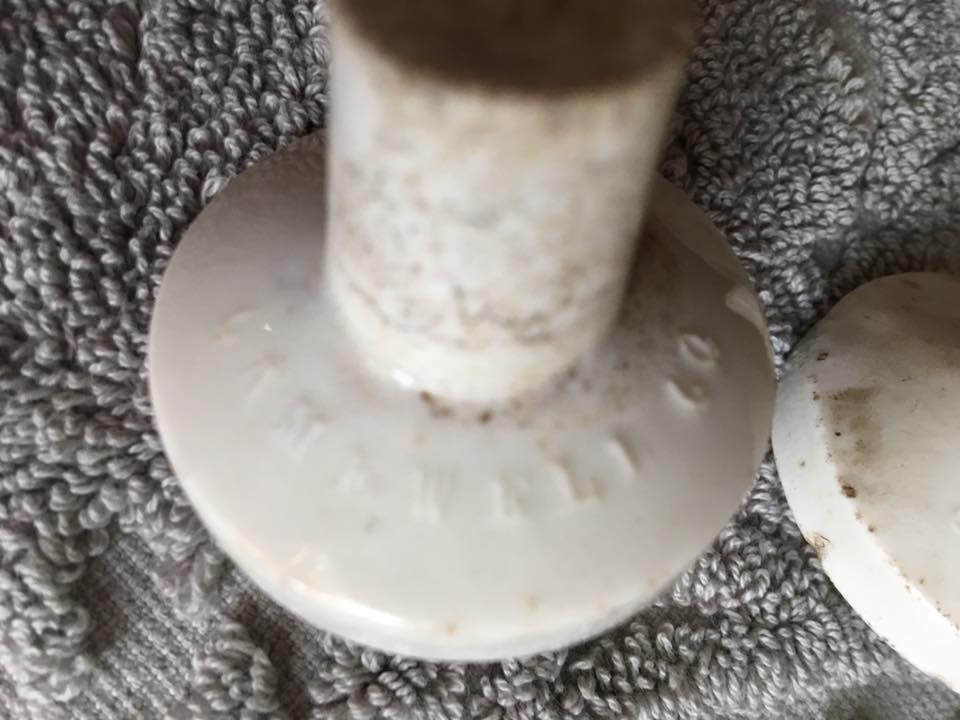
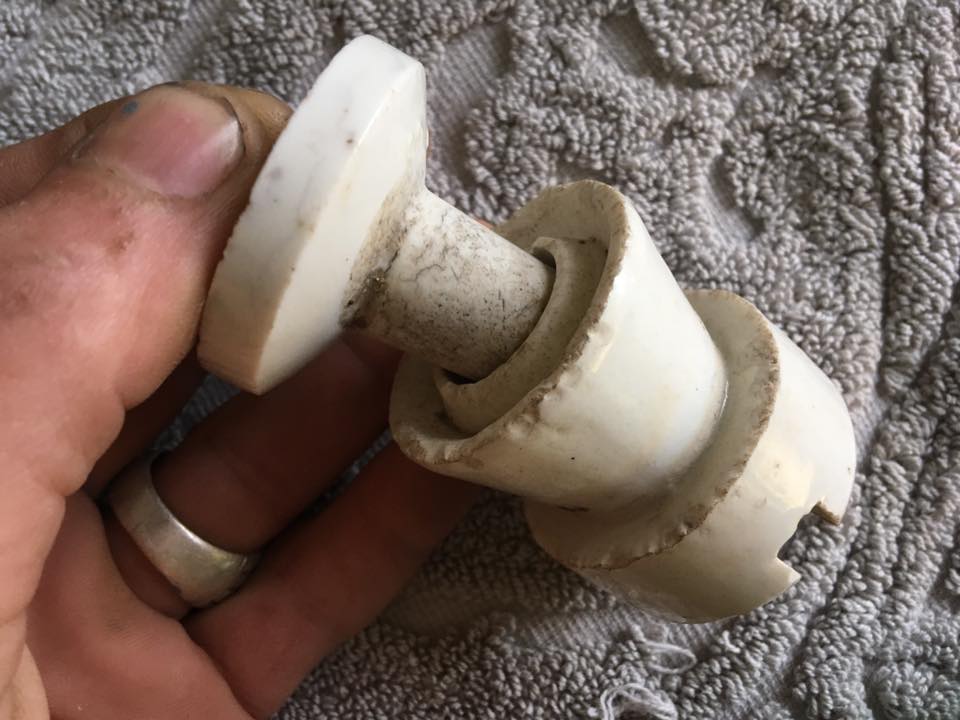
Typical Gamewell insulator with rare embossing: GAMEWELL 60